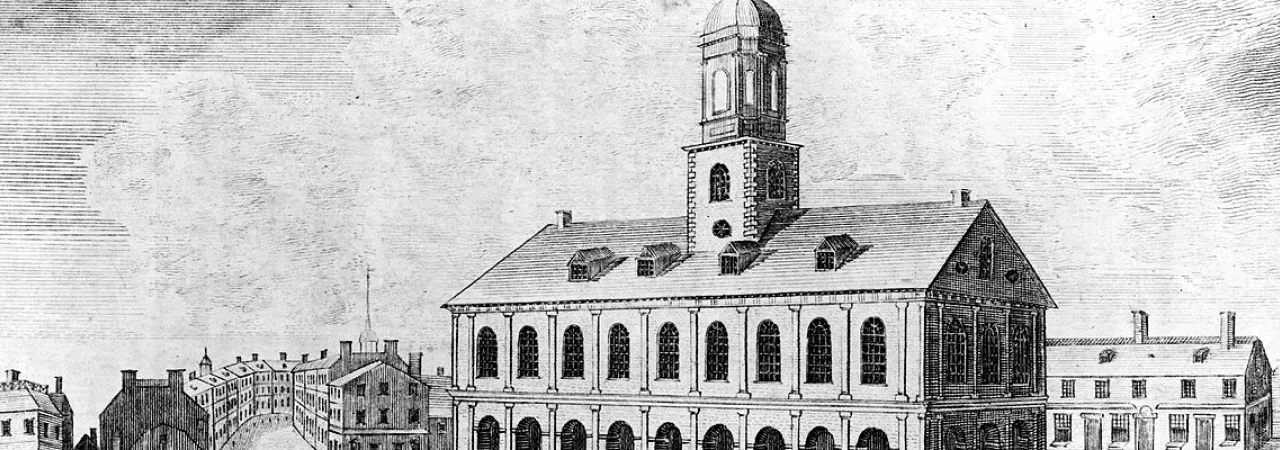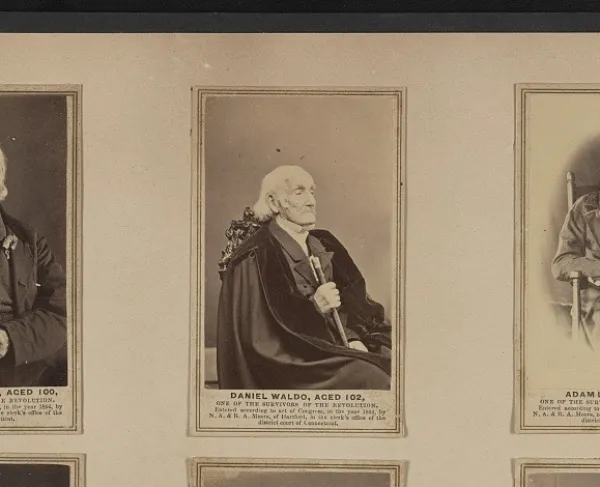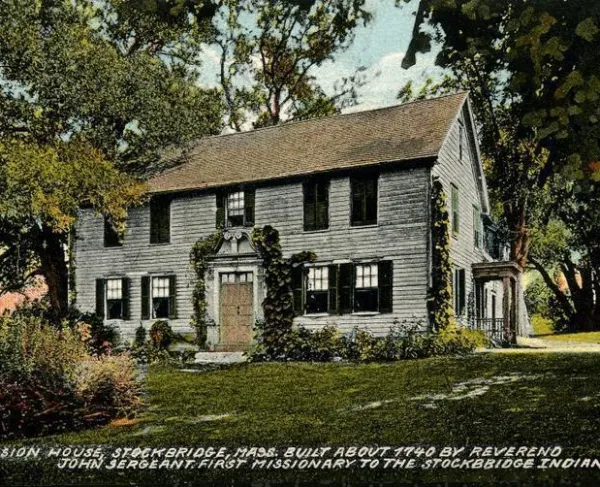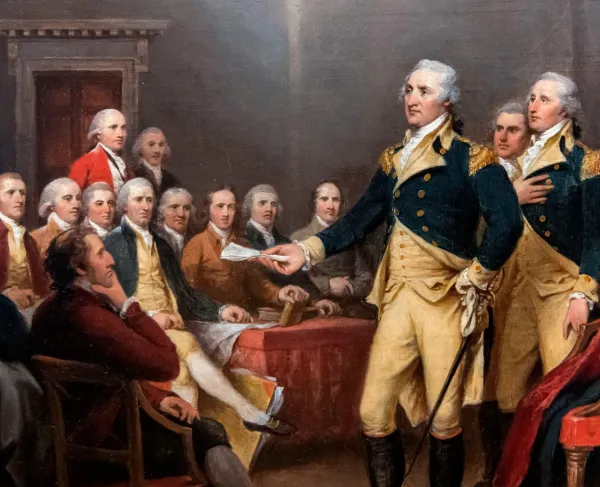
In an era before mass communication, instant contact, or even mass newspaper circulation, news had to be spread in a myriad of ways. When fomenting and solidifying support for opposition against British imperial policies, American colonists established Committees of Correspondence. The three main goals of the committees were to establish a system of communication with other assemblies in the other colonies, educate the townspeople on their political rights, and obviously, rally support to the cause of American independence against British rule.
These Committees of Correspondence began sprouting up in the various colonies almost immediately after tensions started to rise between the colonies and the Mother Country due to the taxation and fall out from the French and Indian War. For example, in 1764, in protest against the Currency Act, Bostonians formed a committee to signal their objection to that legislation. The following year, both Bostonians and New Yorkers formed committees in opposition to the Stamp Act. Their efforts were helped, in part, by the political traditions that thrived in the North American colonies. Town meetings to resolve political issues had always been frequent, with cooperation needed for existence and for the spread of news and information, the groundwork was already there for committees to spring from. Respected members of the town, such as elders, clergy, established families, lawyers, successful businessmen, amongst others provided trusted heads to form the nucleus of these committees as well. However, these committees were short lived, based on the assumption that once a resolution, such as the rescinding of the act in question, had taken place, there was no need to continue to meet and plan.
That assumption proved to be incorrect. Act of Parliament followed Act of Parliament, and the Patriots needed to find the sustainability to keep their movement alive, and a broader cause to rally around. For men like Boston journalist and political agitator Samuel Adams, that happened late in 1772.
On November 2, 1772, in response to a bill passed by the British Parliament that restored a portion of the Townshend Acts, Samuel Adams of Boston, one of the early agitators for American independence, organized the “Committee of Correspondence.” As justification, Adams pointed out that the Acts enabled the British crown and not colonial legislatures to pay the salaries of judges within the province thus making these positions dependent on the King of England and not the local institutions.
Adams used a town meeting to enact his “Committee” explaining its role as:
“to state the rights of the colonists and of this province in particular, as men, as Christians, and as subjects: to communicate and publish the same to the several towns in this province and to the world.”
Furthermore, the committee would:
“Prepare a letter to be sent to all the towns of this province and to the world, giving the sense of this town.”
A list of grievances was the first communique that the Boston Committee of Correspondence sent out to their compatriots around Massachusetts, tackled with a request of “a free communication of your sentiments to this town, of our common danger.” That “common danger” first came in the form of the innocuous brown liquid called tea.
On December 16, 1773, the forces the Committee of Correspondence of Boston had been rallying for the past year finally made their move. Disgruntled about “no taxation without representation” Bostonians dumped 342 chests full of East India Company tea into Boston Harbor. This, naturally, led to reprisals by the British Parliament that further flamed the embers of revolution. In response, the Committee immediately took action, undertaking a messaging and publicity campaign among other tasks.
Not even a forward-thinking radical like Adams could have envisioned the spread of this committee concept which became the bedrock of a continental-wide movement against Parliament. By early 1773, over 80 committees had been formed in Massachusetts alone and within the end of that calendar year, eight other colonies, including Virginia, the most populous, had “Committees of Correspondence.” Before 1774 ended, eleven of the thirteen colonies, excluding North Carolina and Pennsylvania had established their own committees. Estimates range that total membership of the committees could have topped 7,000.
This network helped create unity between various towns, connecting them to other boroughs and expanding their line of thoughts from local to more global or colonial-wide issues. When the time came to call for a Continental Congress in September 1774, these interconnected intracolonial committees had the structure to provide individuals to represent the colony.
During and after the First Continental Congress, the committees worked with the Committees of Safety and Councils of War, which formed just before war broke out with Great Britain and charged with “alarm, muster, and cause to be assembled.” These two groups sustained the fervor for the split with Great Britain and when the firing started, these two bodies essentially became a de-facto government for the rebellious colonies.
Through propaganda in newspapers and periodicals, and oratorical prowess of the various committee members, the Committees of Correspondence set a network for information, knowledge, and sprouting the seeds of discontent and disunion with the mother country. In this vein the committees could relay “any intelligence of importance” and thus the news could be “quickly disseminated to the whole body of the people” throughout the colonies As Samuel Adams succinctly phrased it:
“We cannot make events, Our Business is wisely to improve them.”
Further Reading:
- The Long Fuse: How England Lost the American Colonies 1760-1785: Don Cook
- Founding Brothers: The Revolutionary Generation: Joseph J. Ellis
- The Glorious Cause: The American Revolution, 1763-1789: Robert Middlekauff
- Revolutionaries: A New History of the Invention of America: Jack N. Rakove
- Samuel Adams: A Life: Ira Stoll





